Sunbeam Tiger
American V8 engines in an English roadster – only available in the Cobra! Right? Wrong! But interestingly, the inventor of the Cobra also had something to do with this project. Because if we leave the Rover V8 engine out of the equation for a moment, even though it was originally an American design by Buick, there was one other product in particular to which the above attributes applied. The Rootes Group wanted a more powerful version of the Sunbeam Alpine. This two-seater roadster is familiar to movie fans from the very first James Bond film ‘Dr. No’ from 1962.
Ferrari development rejected
In the same year, the Australian racing driver Jack Brabham suggested installing a V8 engine in the Alpine. Prior to this, the Rootes Group had already asked Ferrari whether the previous inline four-cylinder could be reworked. It was hoped that the additional title ‘Powered by Ferrari’ would lead to higher sales figures. However, the negotiations failed. So Brabham’s proposal came at just the right time. The company lacked the financial resources to develop its own V8 engine. Instead, the head of the Rootes Group’s motorsport department, Norman Garrad, gave his son Ian the task of organizing a suitable engine. Ian Garrad was working as the sales manager of Rootes Group on the American West Coast at the time. He used a wooden stick to measure the empty engine compartment of a Sunbeam Alpine. Then he sent his service manager, Walter McKenzie, to surrounding dealerships to find a suitable unit.
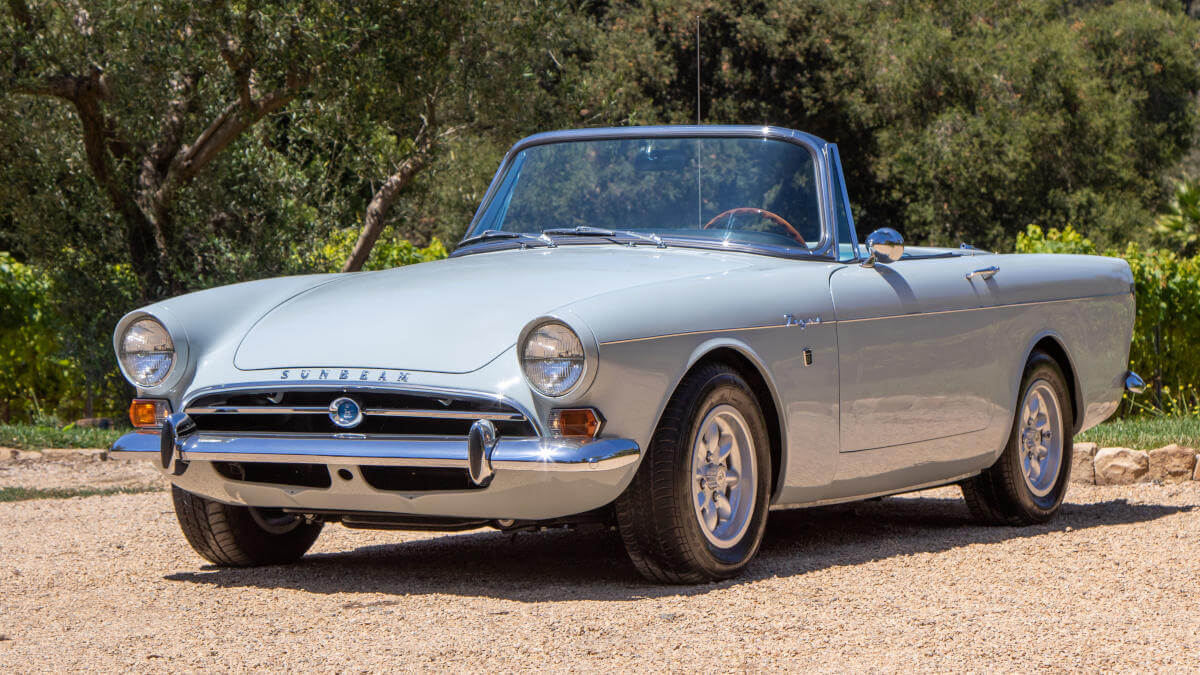



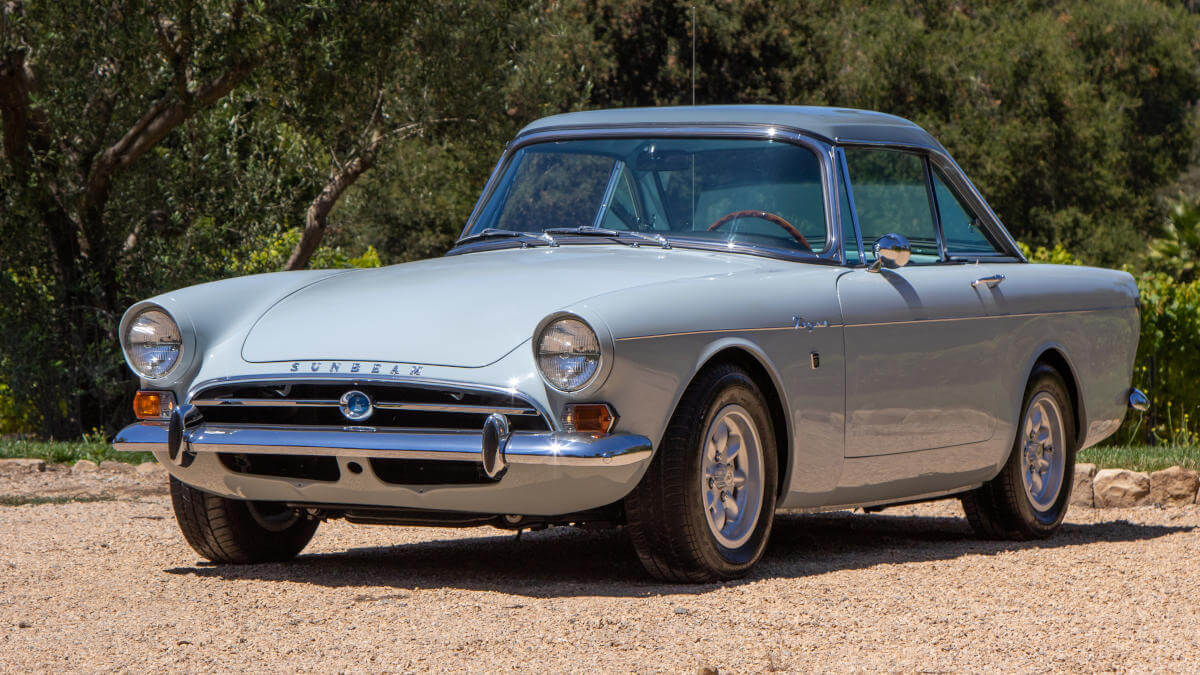



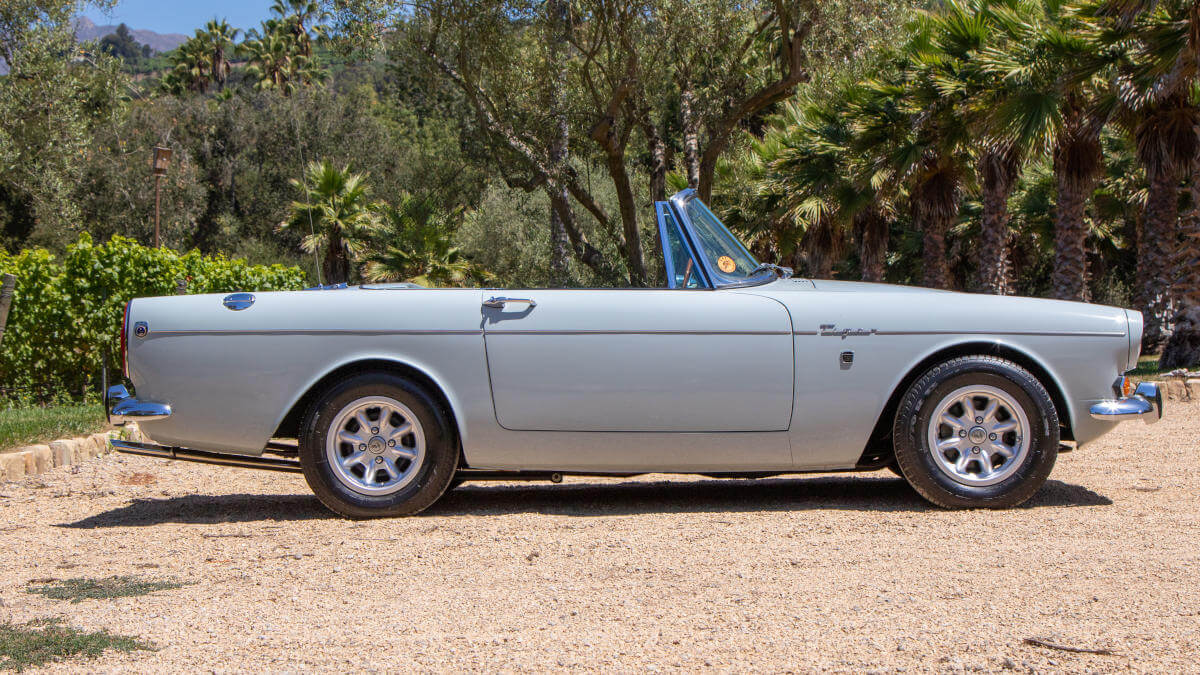



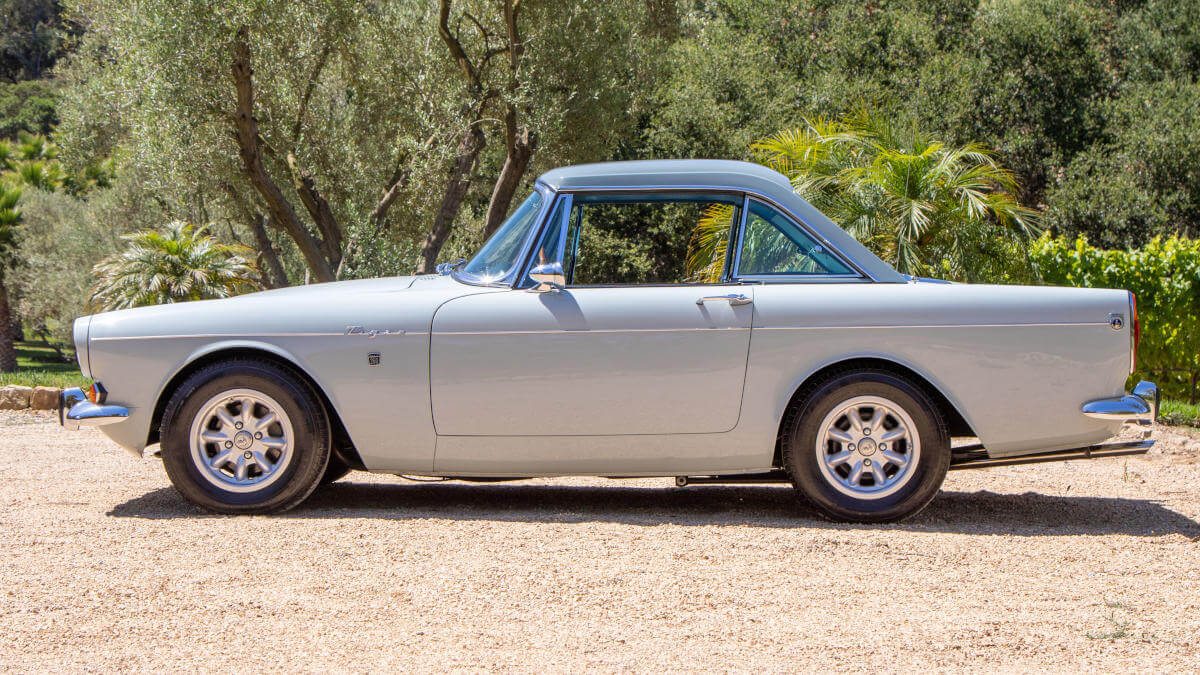



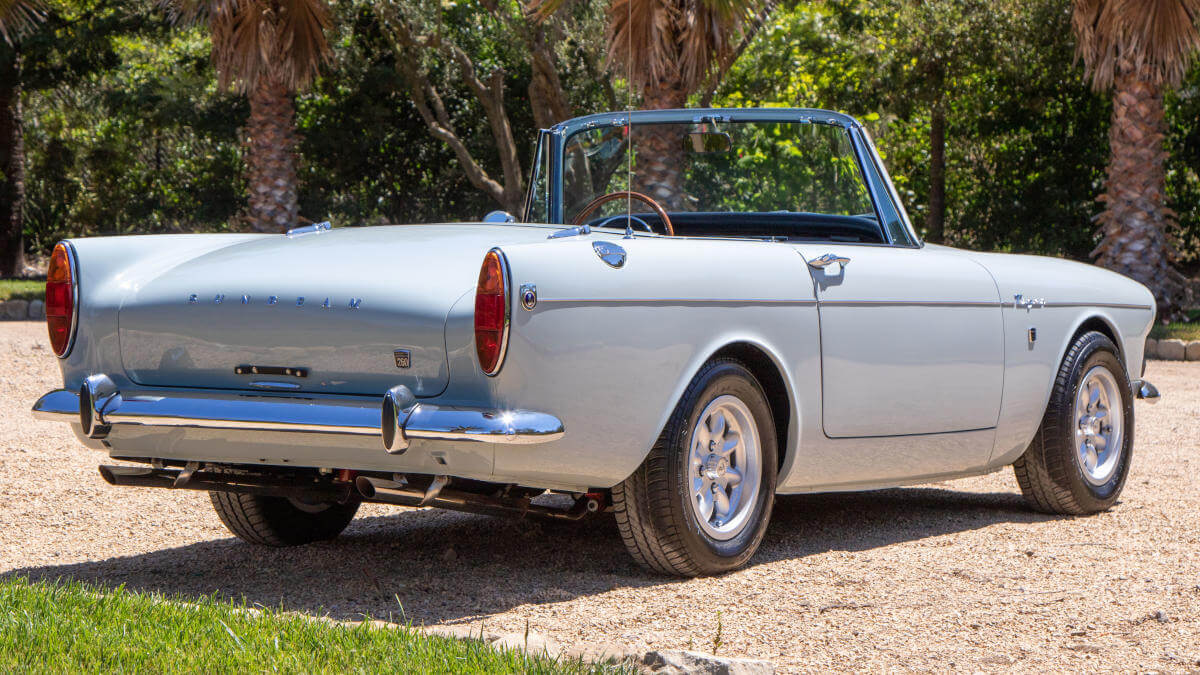



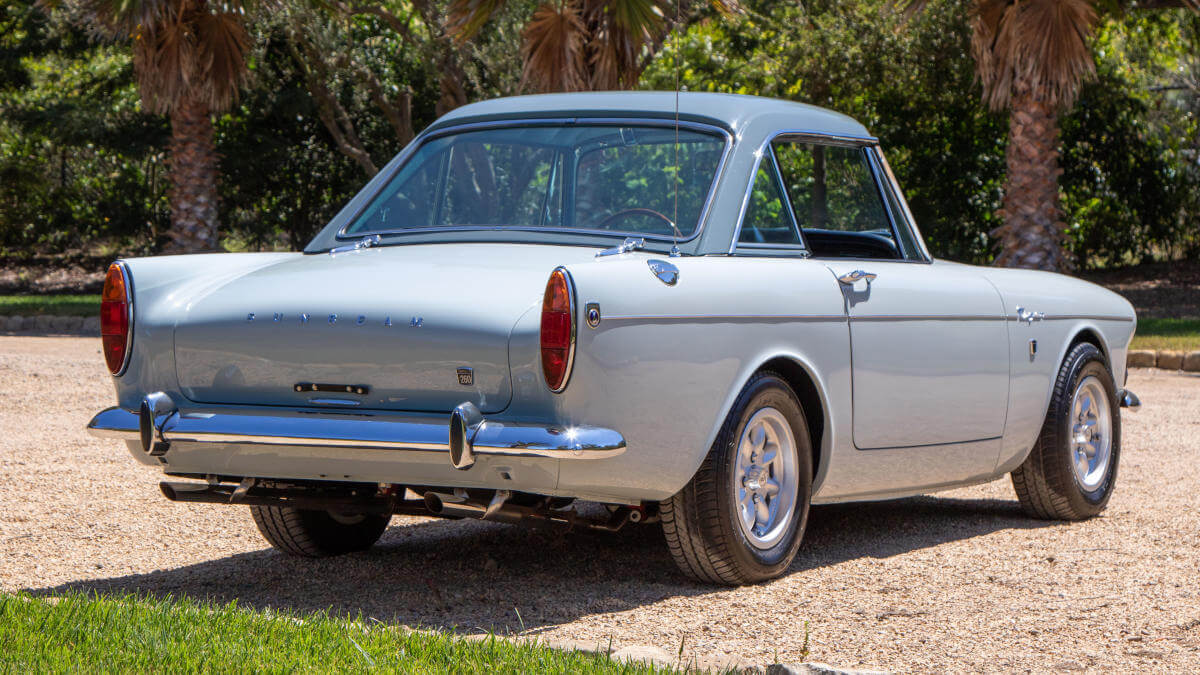



Carroll Shelby helped with the development
Mr. McKenzie came back with the news that the 260 Ford V8 might fit. In addition, this engine, weighing only 200 kilograms, was also a possibility. In the immediate vicinity of the Rootes office in California was the company of Carroll Shelby. There, they asked for an estimate of the cost of building a roadworthy prototype and the time required. The answer was: eight weeks and about US$ 10,000. After Brian Rootes, head of the sales department, agreed, they got started. Shelby had already transplanted V8 engines into the AC Ace and developed the Cobra in this way. Now, based on the Sunbeam Alpine, a comparable sports car was created. V8 engines with 260 cubic inches (4.3 liters) of displacement were purchased from Ford and the prototype Thunderbolt was created. A second prototype was created by racing driver Ken Miles. This car, however, had a two-speed automatic instead of a four-speed manual transmission.
Lord Rootes got excited
All new Rootes Group vehicles had to receive Lord Rootes’ strict judgment. However, he wasn’t informed about the development of the new sports car until various test drives had already taken place in the USA. According to various sources, he wasn’t very enthusiastic about this. The Thunderbolt prototype convinced him to such an extent that nothing stood in the way of series production. What’s more, he personally called Henry Ford II to set up the engine deal. The company hoped to produce 3,000 units in the first year of production and ordered a correspondingly large number of parts – the largest single order Ford had ever received up to that time. The world premiere was scheduled for the 1964 New York Motor Show.
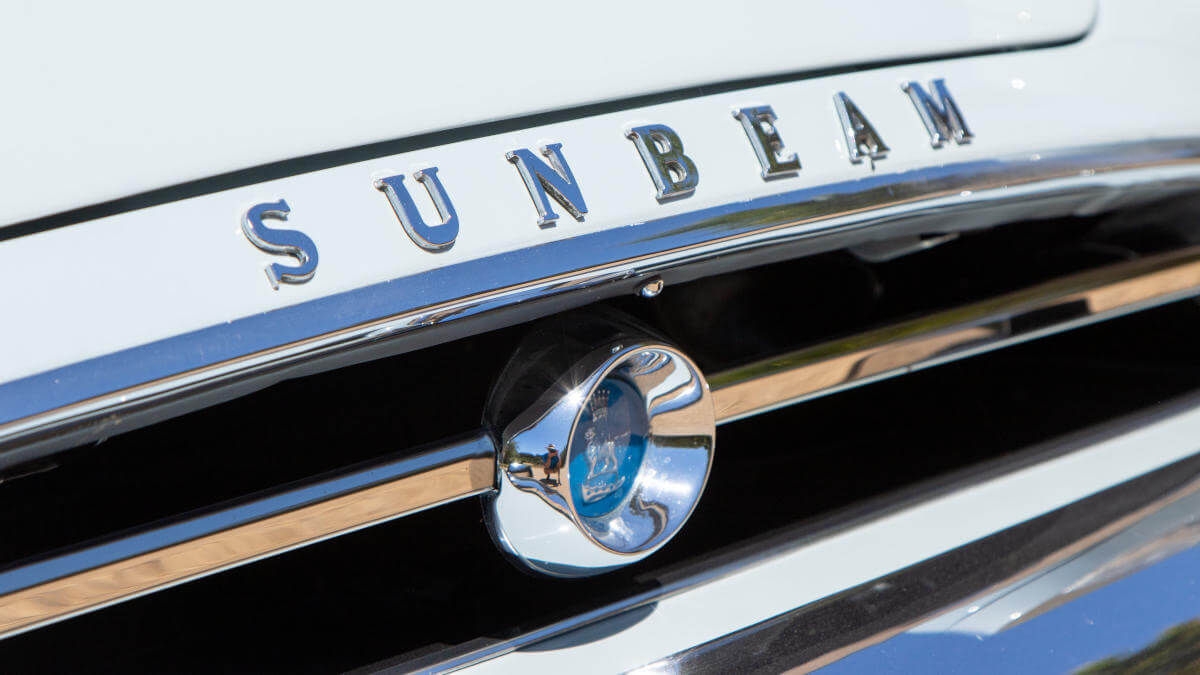



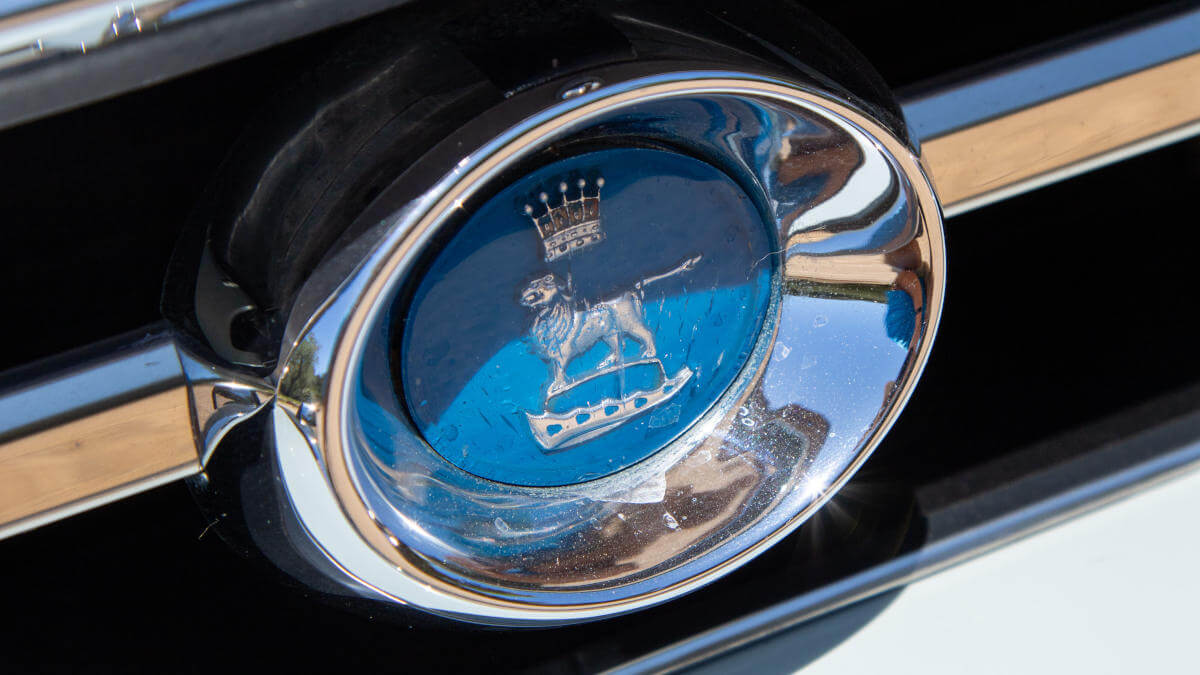



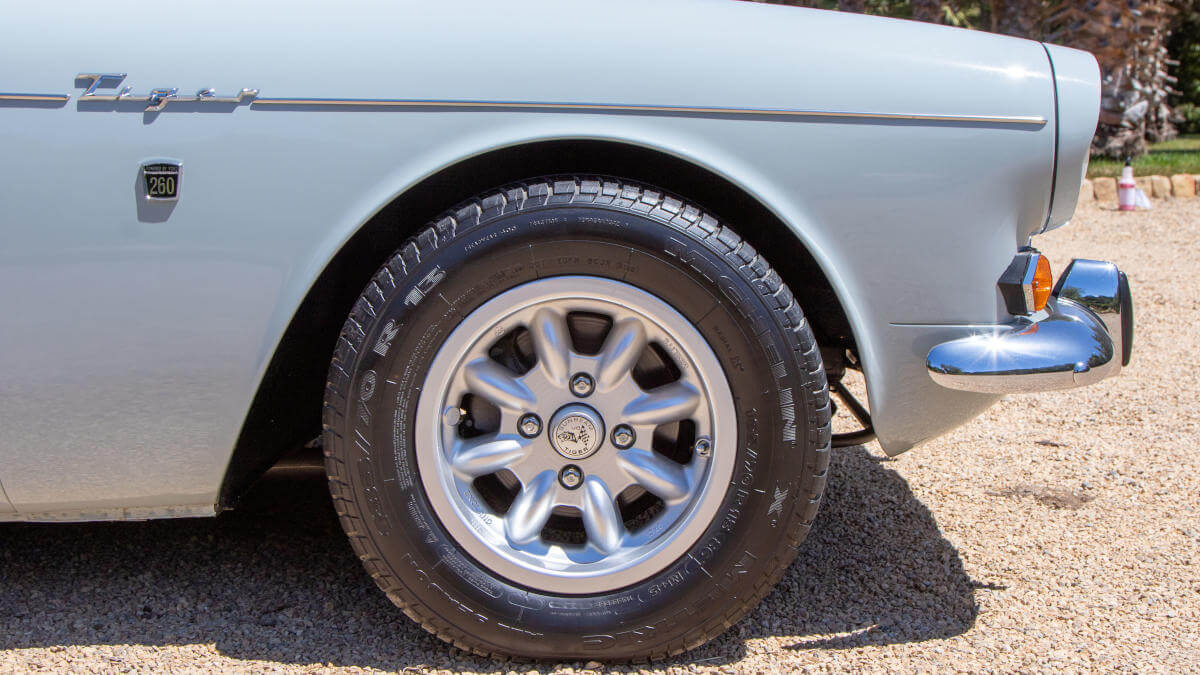



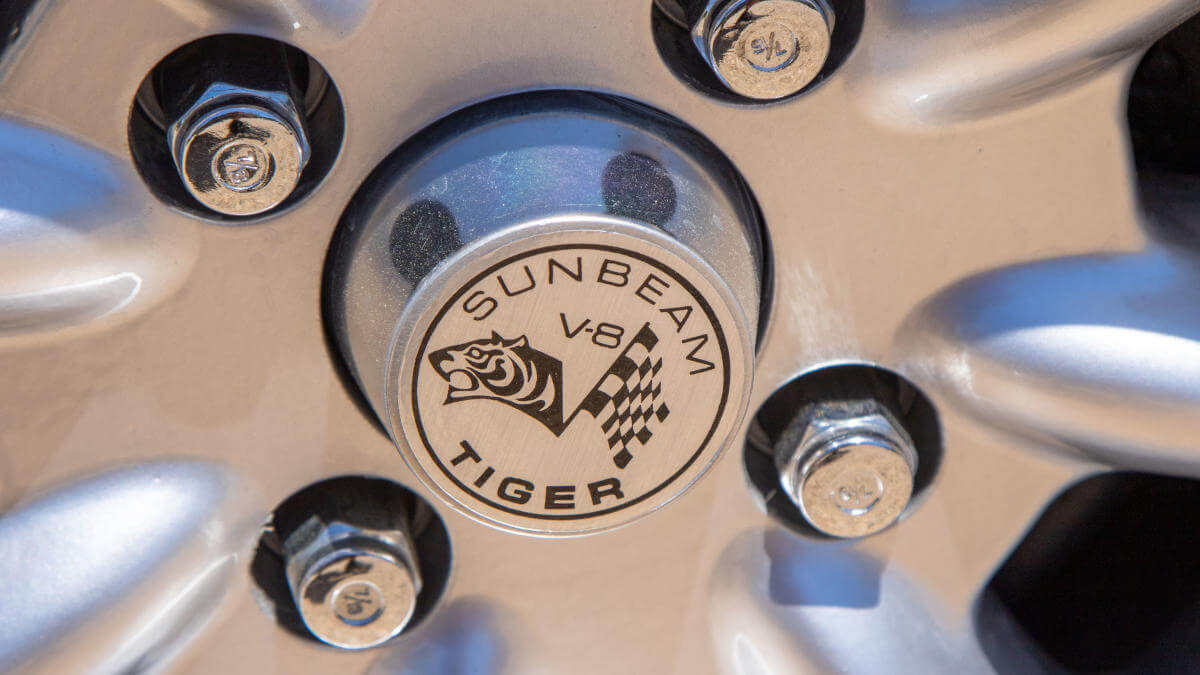



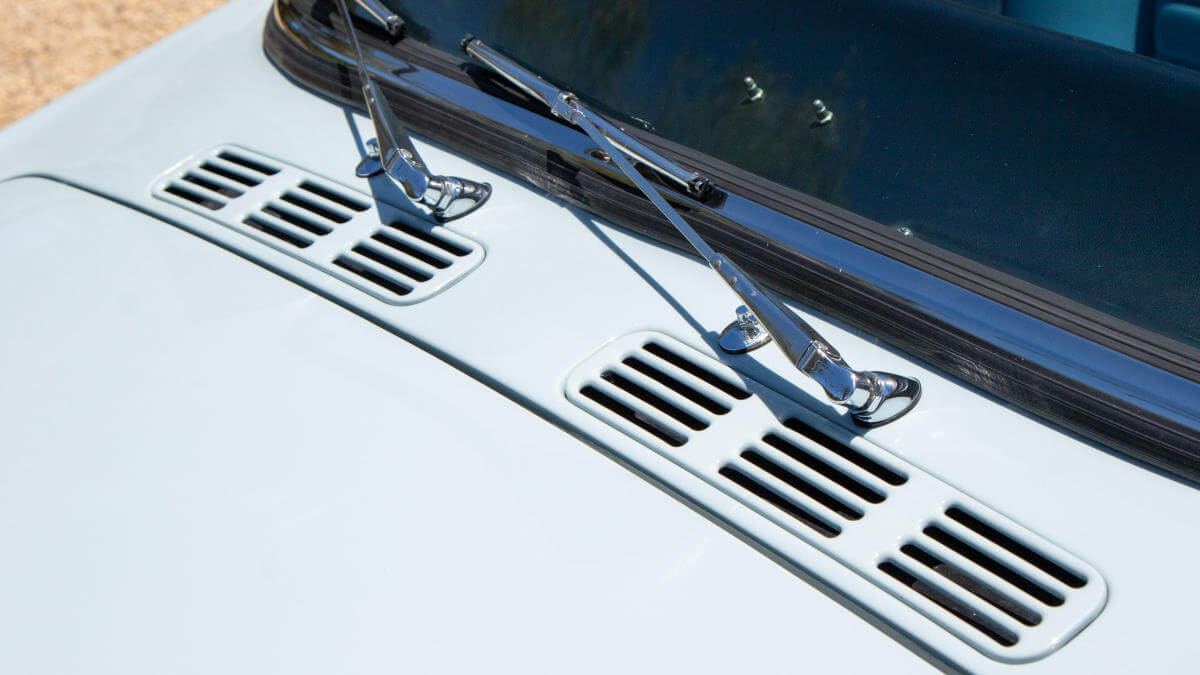







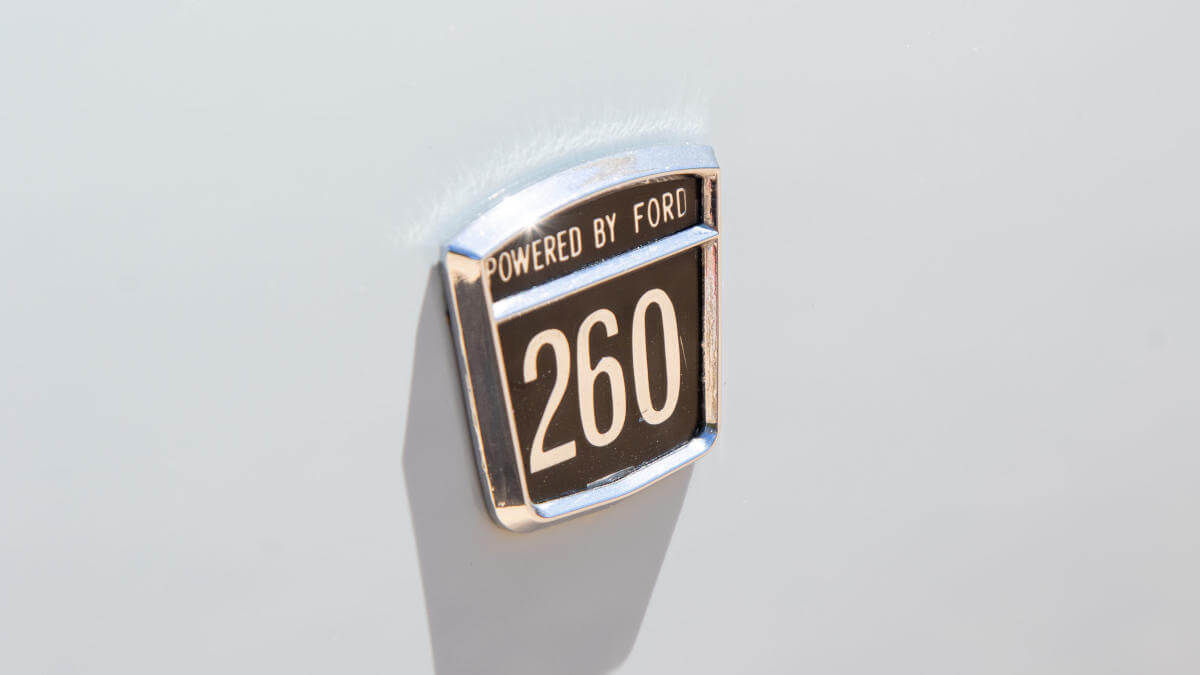



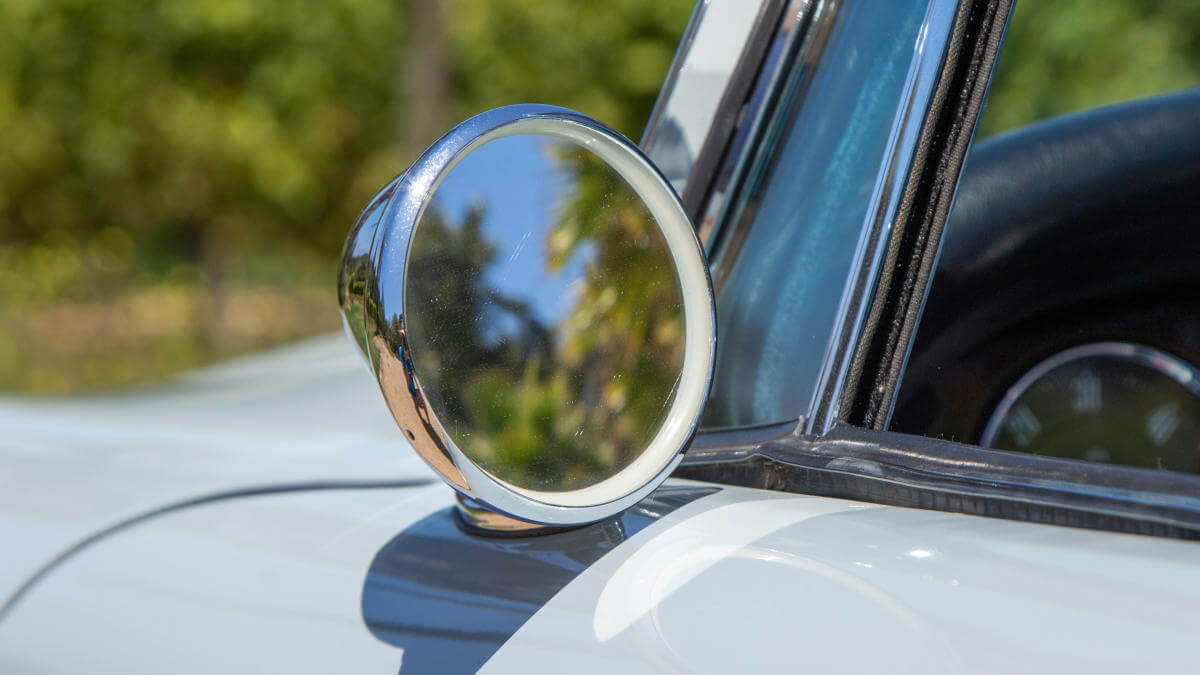



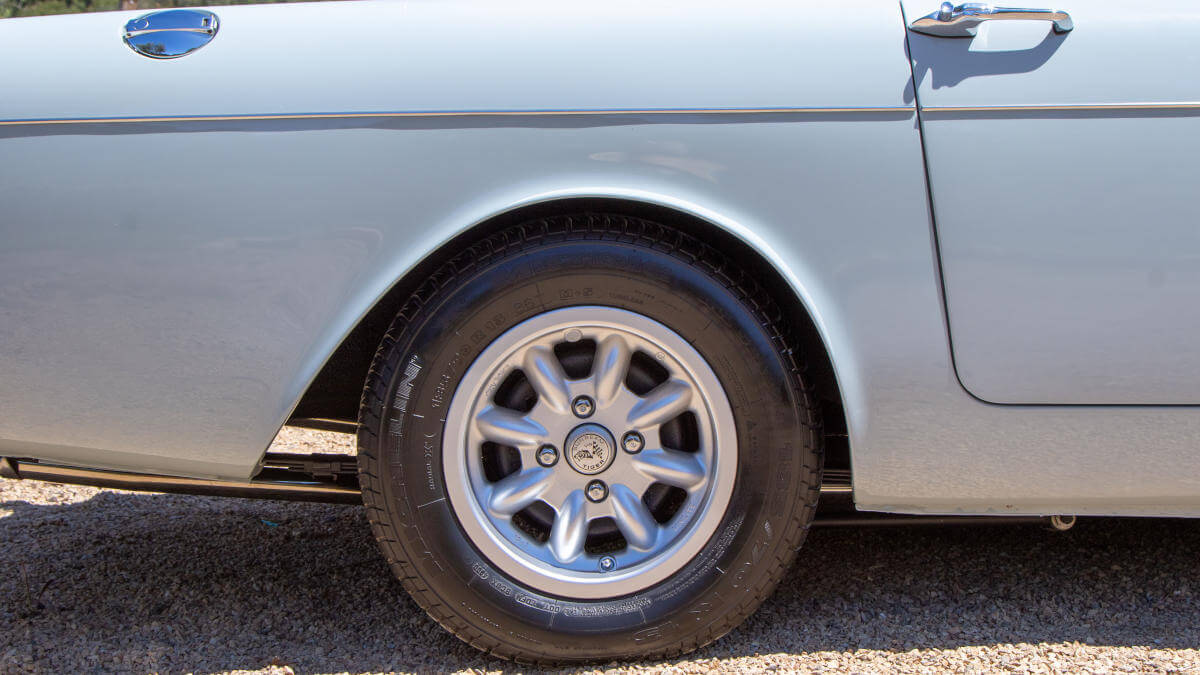



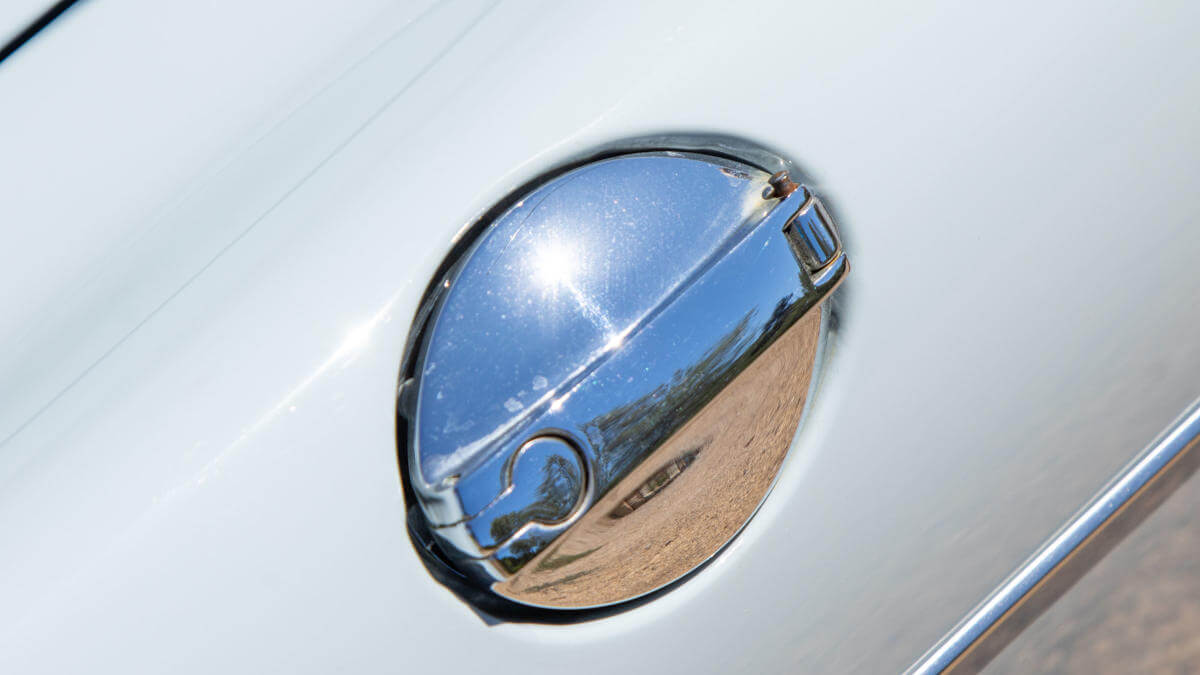



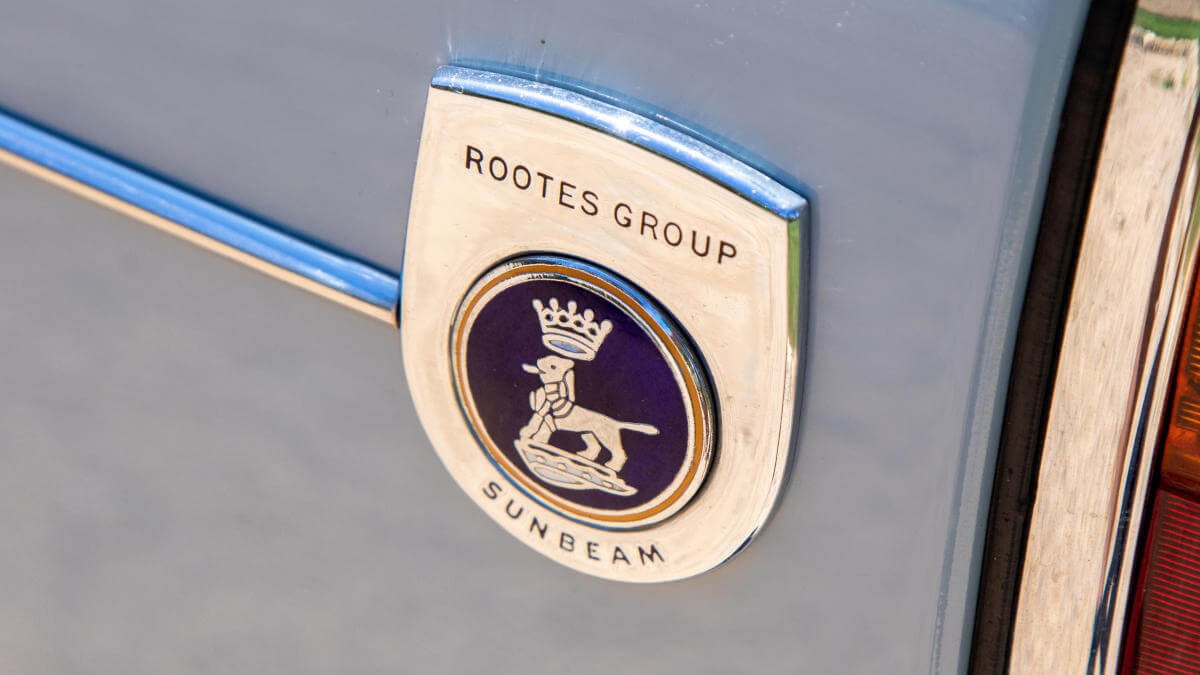







Series production at Jensen
Shortly before the presentation, the converted Alpine was given the name Sunbeam Tiger. A record-breaking car of the same name from 1925 served as inspiration. Shelby had actually hoped to receive the order for production. Lord Rootes, however, didn’t like the proximity of him to the Ford Group, which is why he kept the Tiger production in Great Britain. Since the Sunbeam plant didn’t have the capacity needed, Jensen was contracted. Shelby was paid an allowance for each Sunbeam Tiger built. By mid-1964, 14 pre-production prototypes had been built at Jensen.
V8 engines from Ford
Starting in June 1964, less than a year after the Shelby prototype was completed, production began. All body shells were built and painted at Pressed Steel in Oxfordshire. After a short time, 300 units a month were already coming off the production line. Since Ford was initially unable to supply the four-speed transmission from the new Mustang, a similar transmission from BorgWarner was used. Deviating from the series power output of 164 hp there were tuning possibilities available at the US dealers up to 245 hp. Starting in 1967, the Sunbeam Tiger Mark II was available with a 289 Ford V8 (4.7 liters). However, there were no more ‘Powered by Ford’ plates on the car, as Chrysler had bought a large stake in the Rootes Group in 1964 and the majority of shares in 1967. Therefore, Tiger production ended on June 27, 1967, after the stock of Ford engines was emptied. Chrysler’s own V8 engines were too big for the Alpine body.
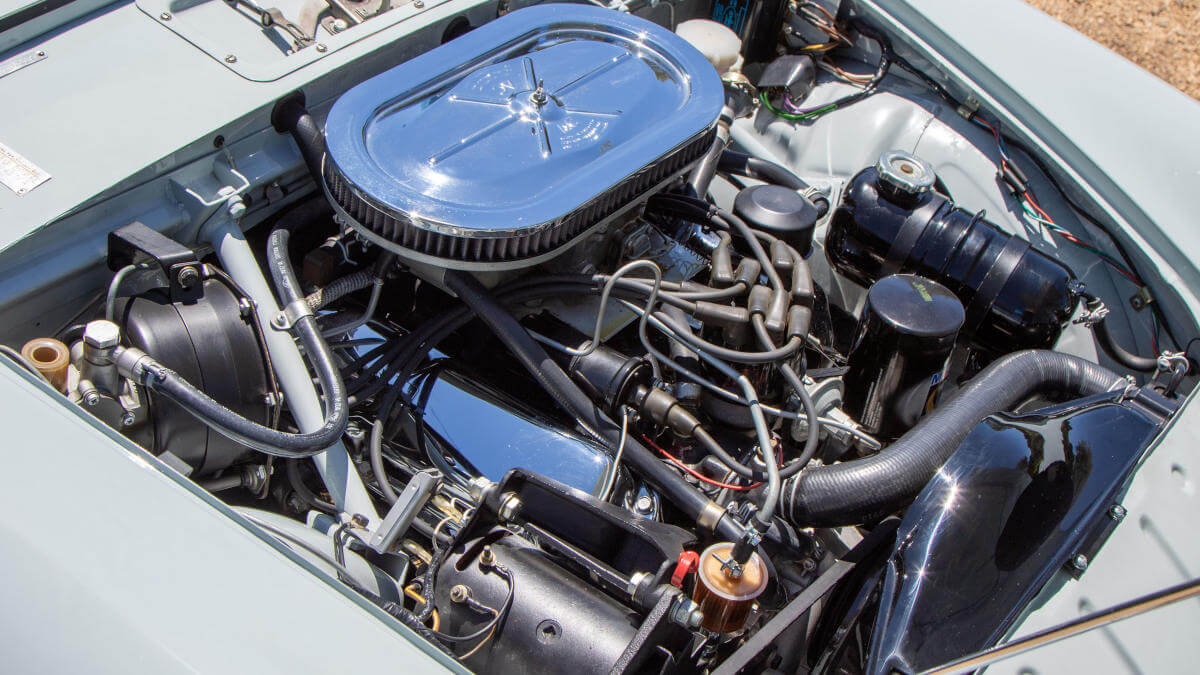



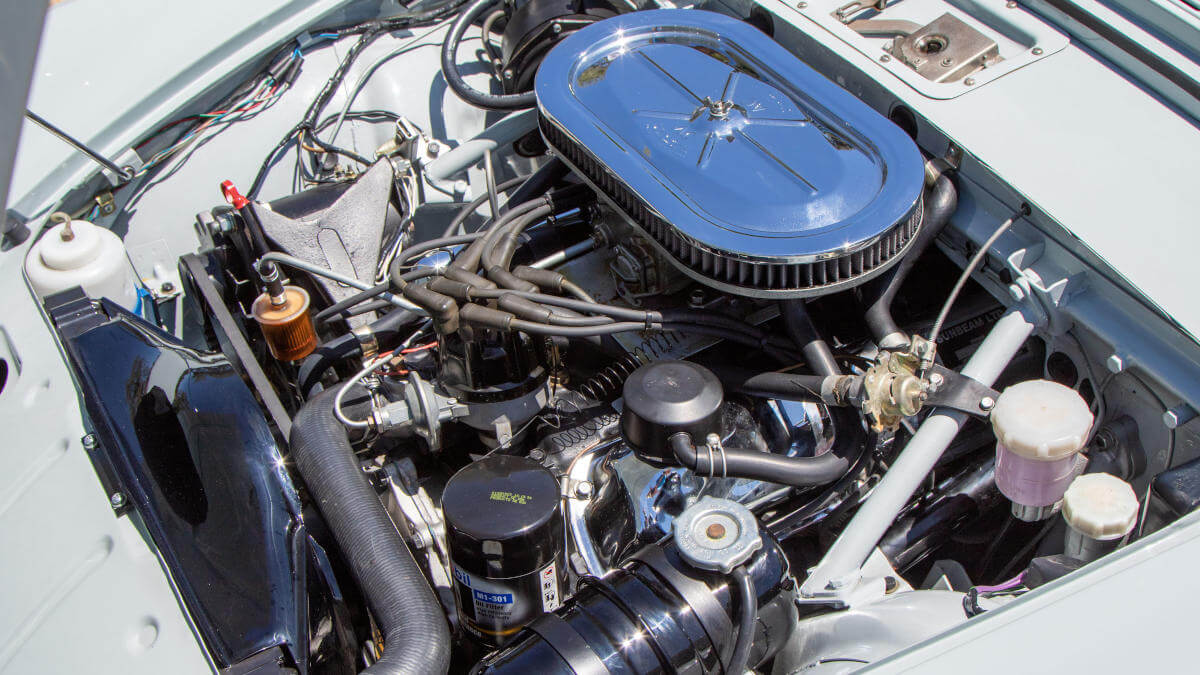



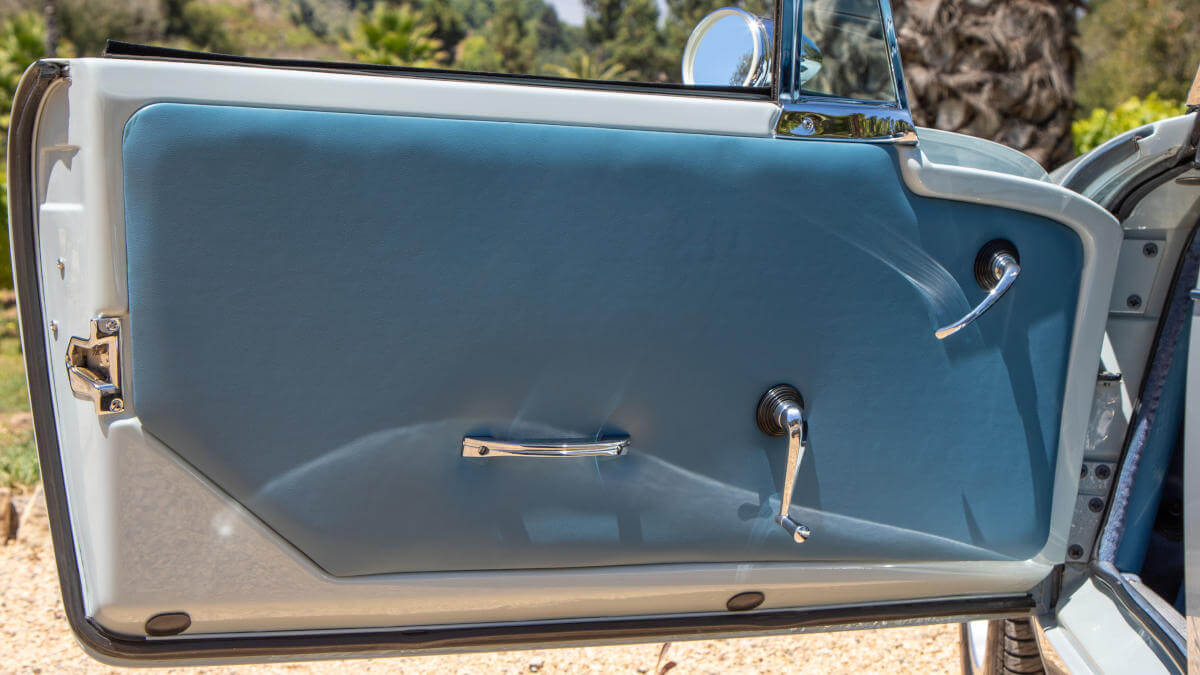



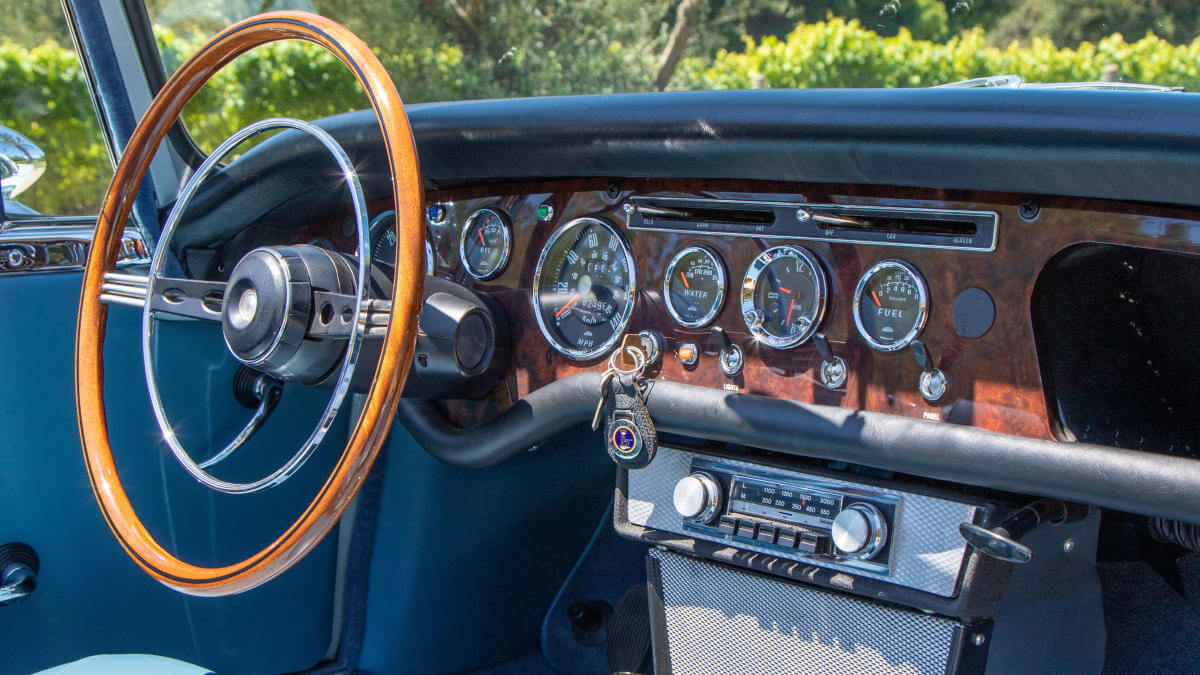



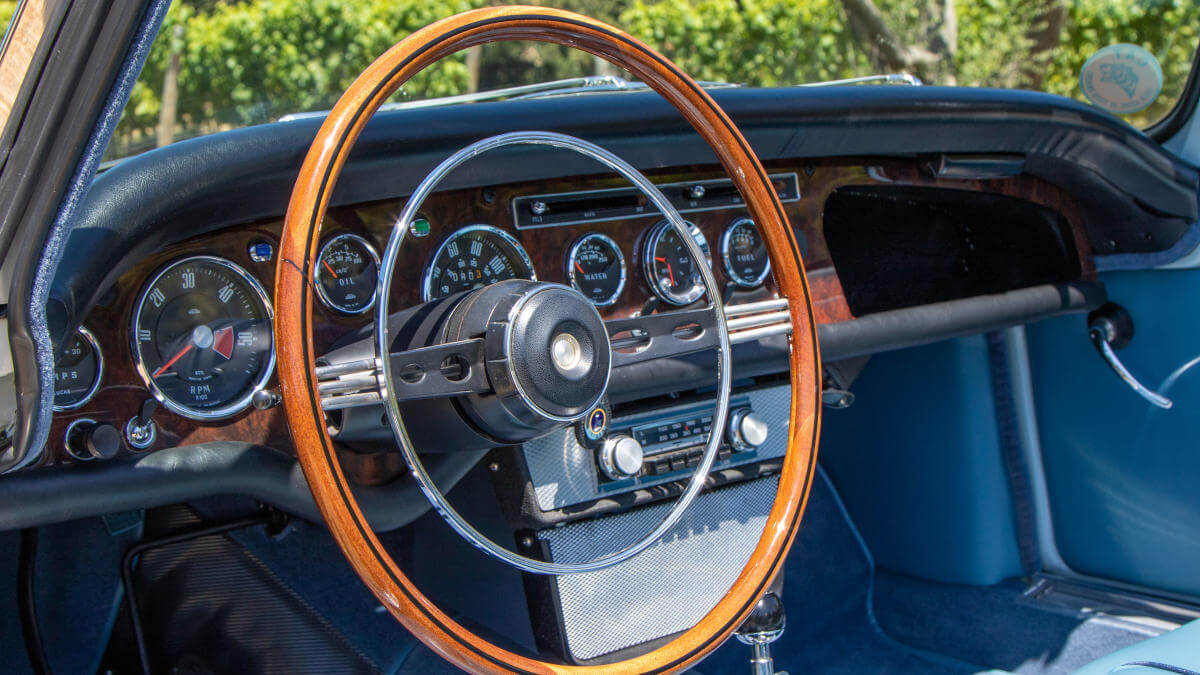



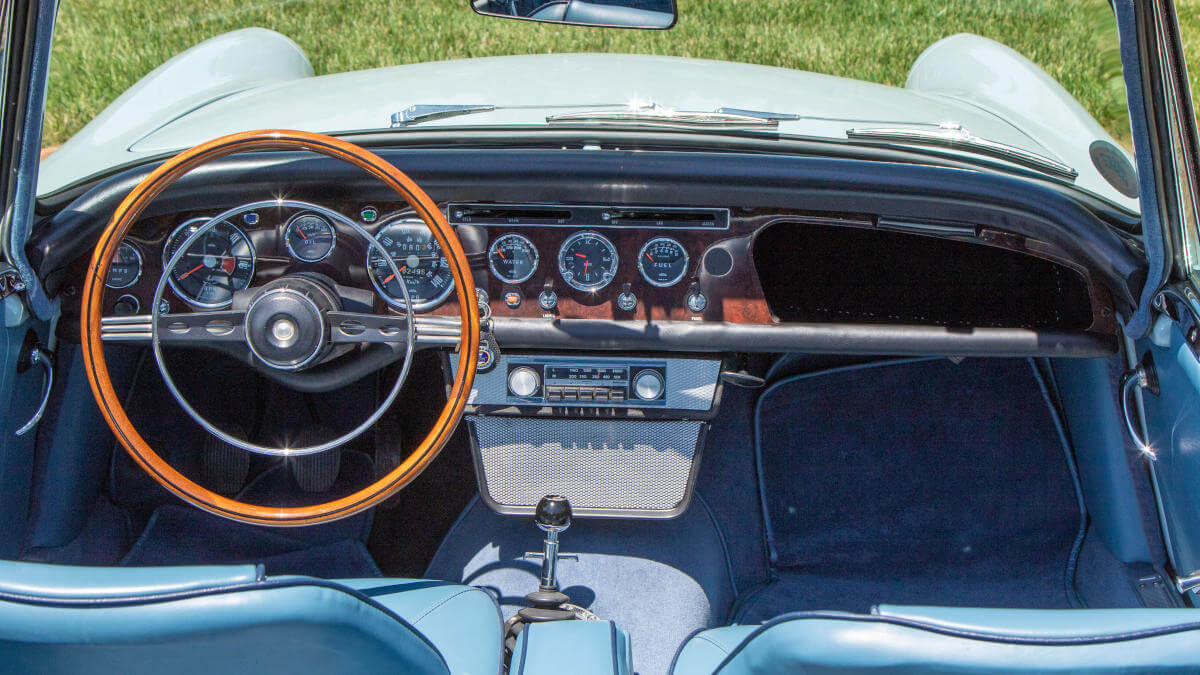



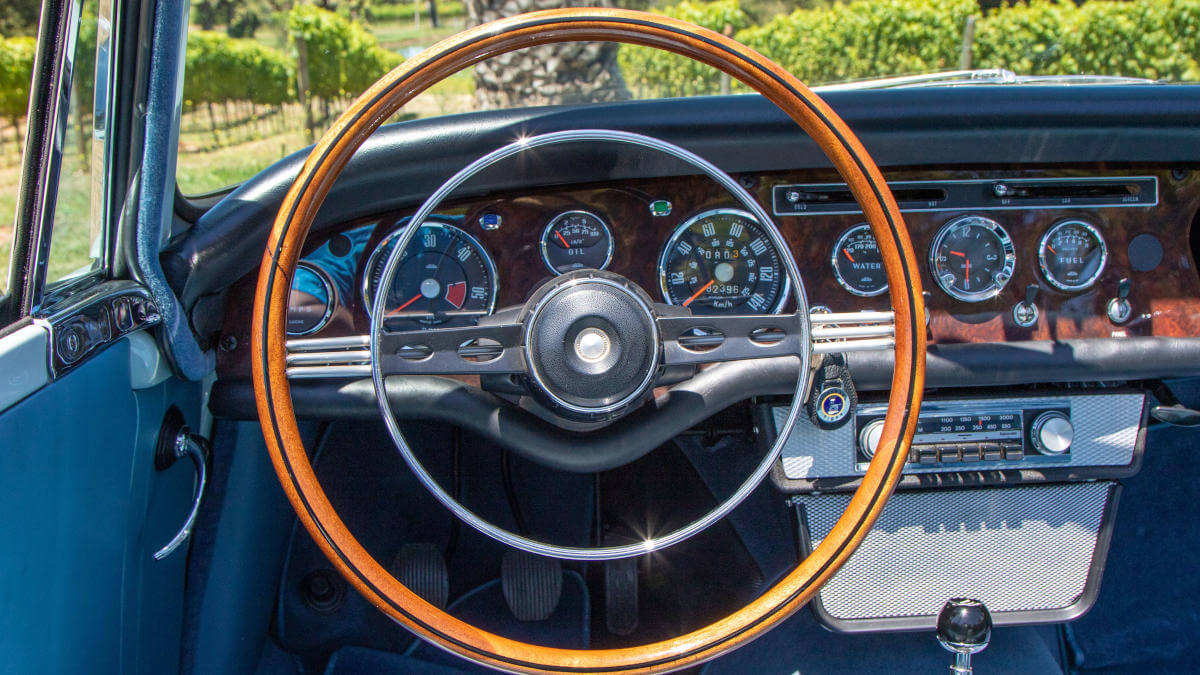



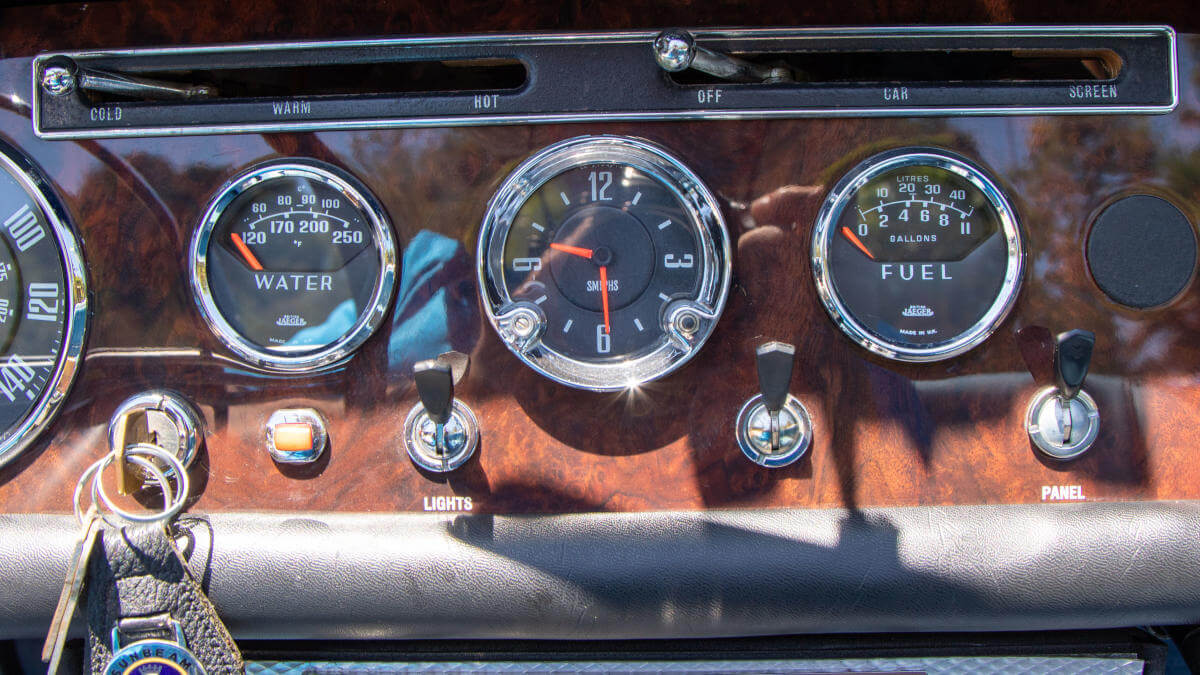



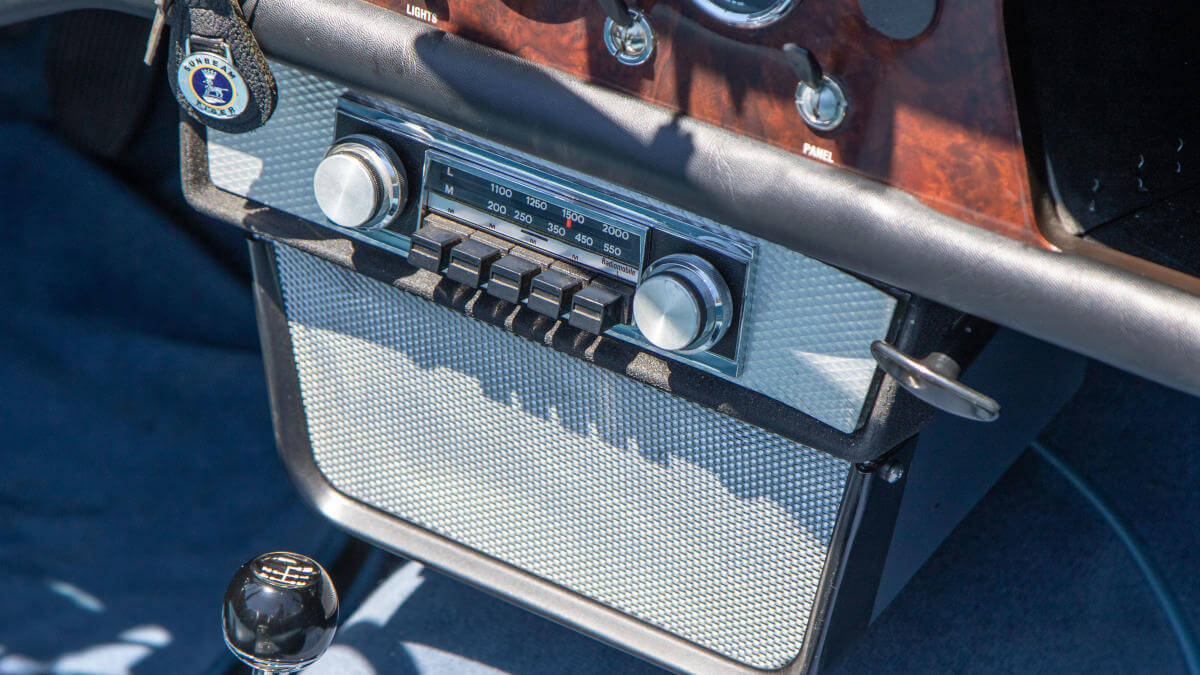



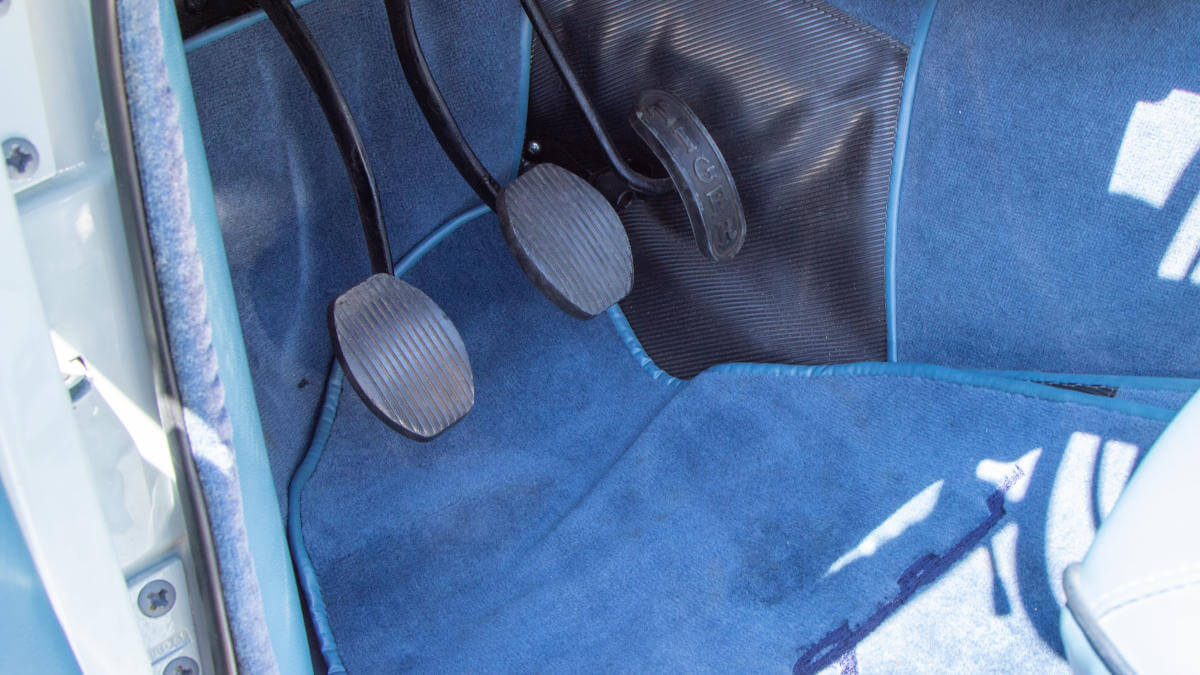



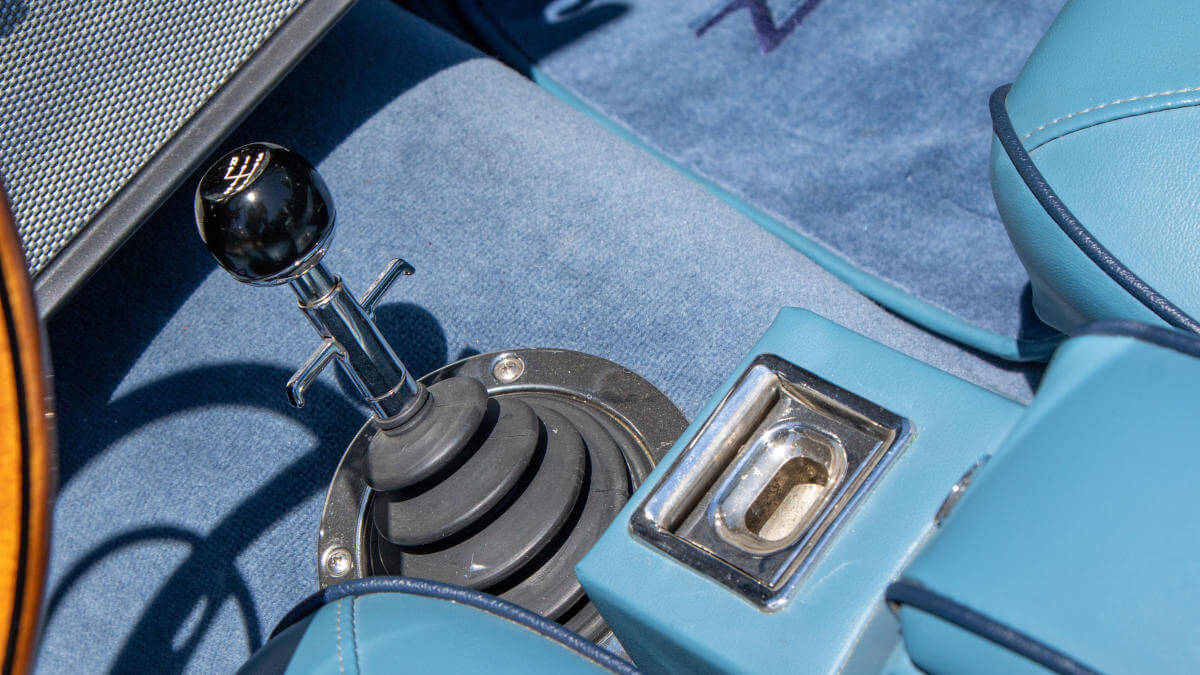



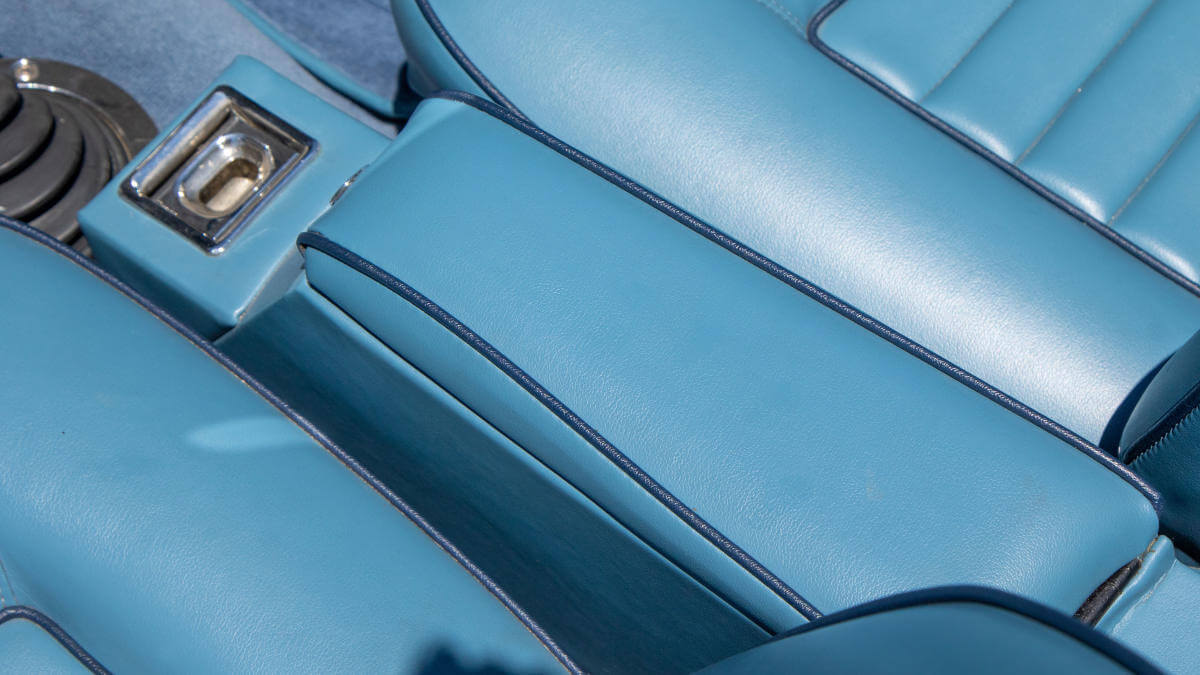



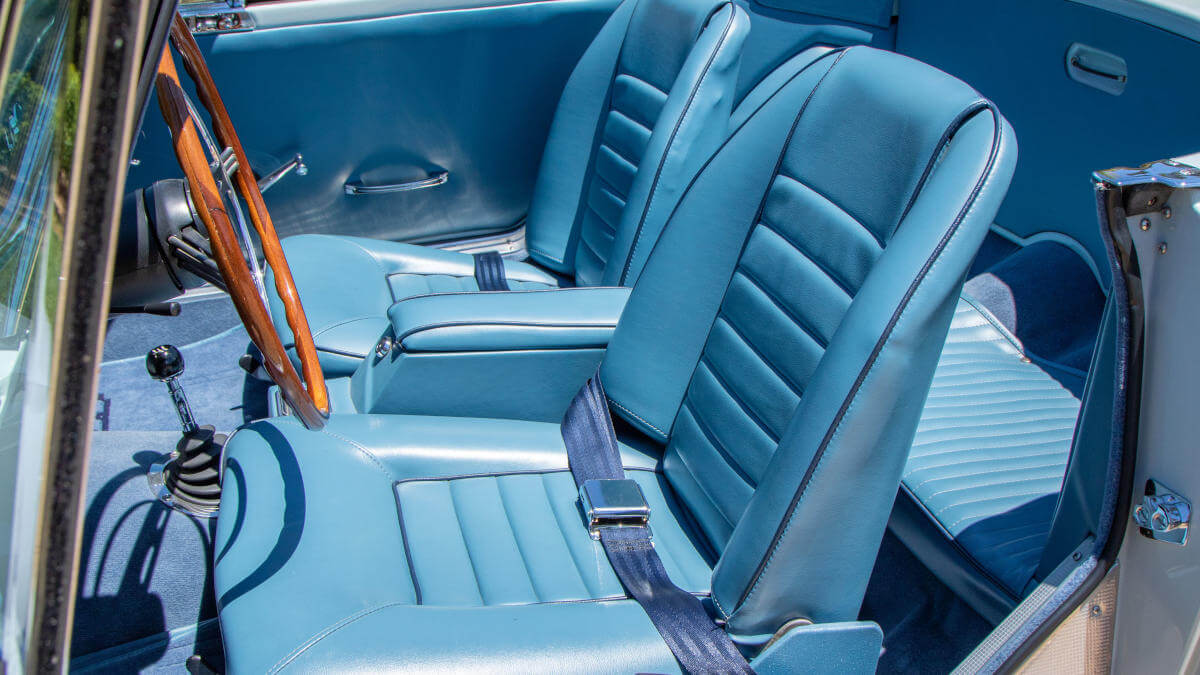



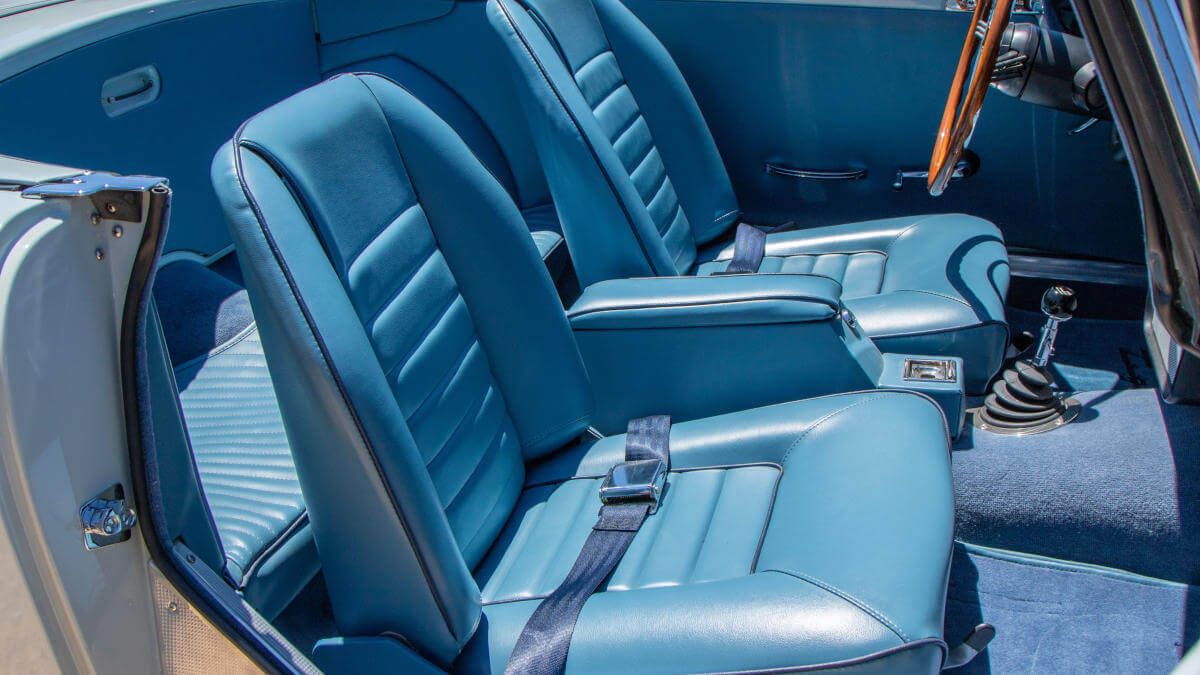



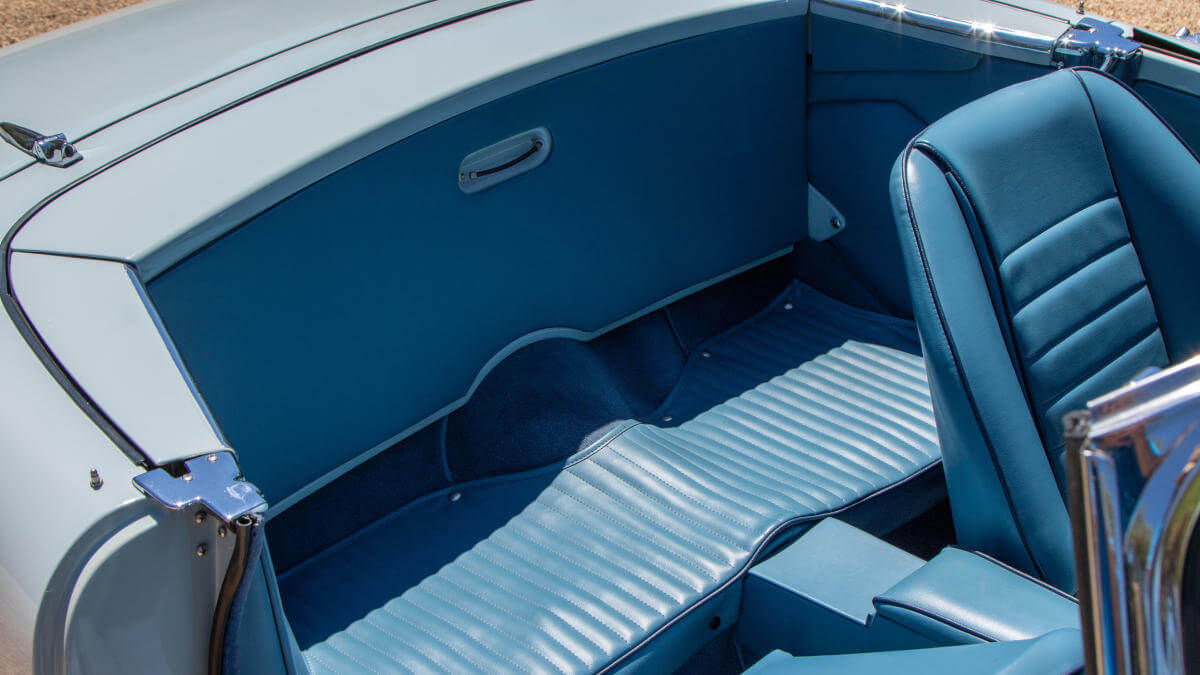







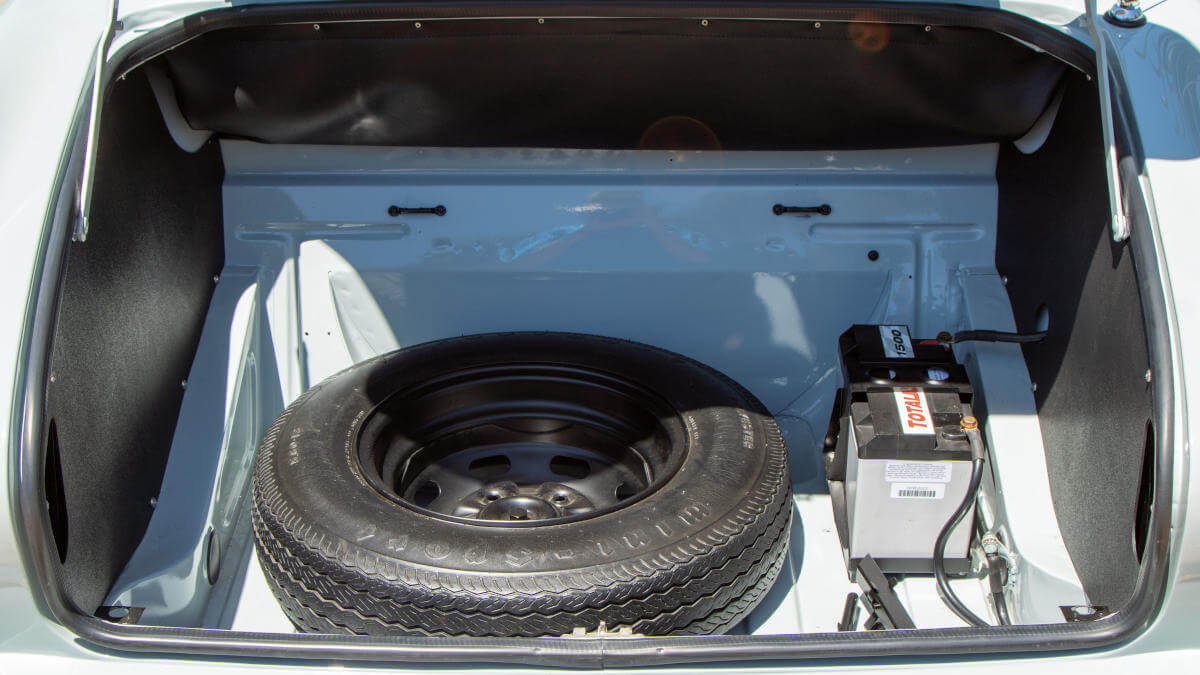



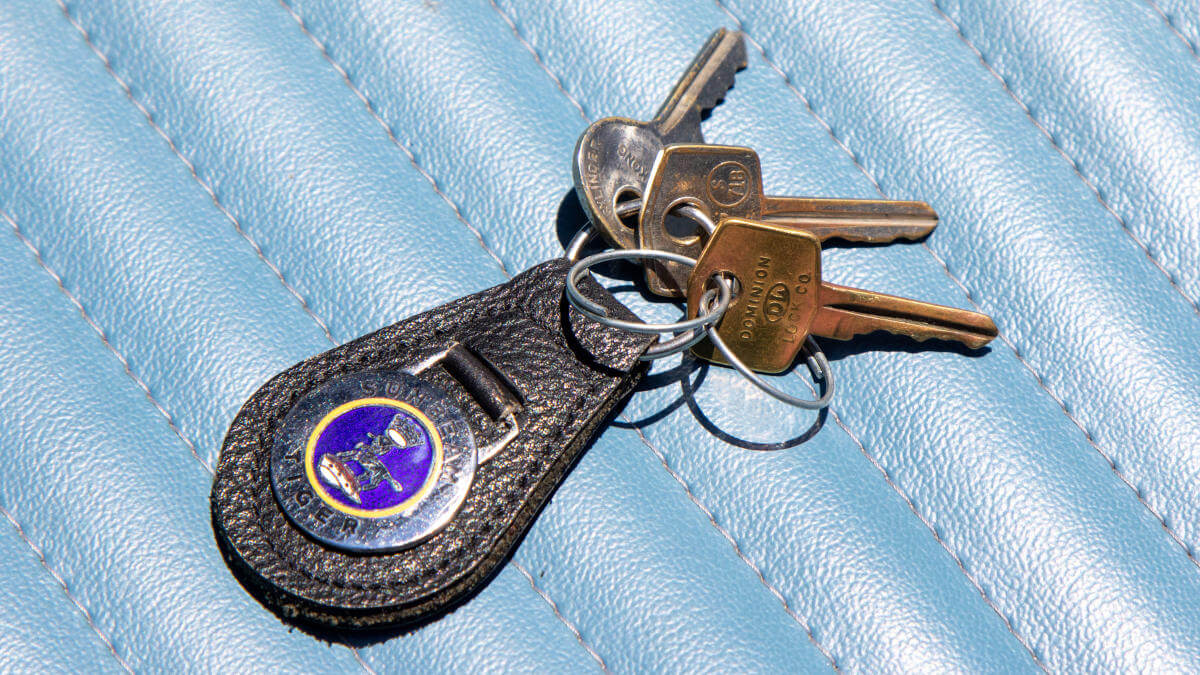







Sunbeam Tiger in motorsport
Even before production began, three prototypes were built for the 1964 24 Hours of Le Mans. These cars received custom-built Coupé bodies with hatchbacks from Lister. The standard four-speed transmissions were also replaced with more closely tuned ones from BorgWarner, which allowed a topspeed of 160 mph. Two of these three vehicles competed at Le Mans. As there wasn’t enough time for test drives beforehand, both suffered from overheating. Carroll Shelby therefore reimbursed Rootes for the development costs. Later that year, Shelby competed in the B category of SCCA with a Competition Tiger. Since he entered development of the Ford GT40 shortly thereafter, he turned the Tiger project over to the Hollywood Sports Car dealership. Entries in the GT class on the circuit and in drag races and rallies followed.
Early example at RM Sotheby’s
From the first year of production, 1964, RM Sotheby’s is offering one example on January 22 in Arizona. This car wears ‘Balmoral Grey’ paint. Only 27 of a total of 7,128 cars received this color from factory. The car’s history is known since the mid-1970s, when it was for the first time registered in California. Various invoices and documents prove that the owners attached importance to an impeccable condition. In 2006, Neal Wichard took ownership of the car and commissioned Doug Pratt, David Zumstein and Tom Shelby (Carroll’s nephew) to perform an extensive restoration. Subsequently, the car received two Best of Show awards at the 2011 Sunbeam Tiger Owner’s Club Concours and the SAAC meet in Santa Monica. The highest bidder will now receive the original factory hardtop, on-board tools including jack and various books. RM Sotheby’s expects a hammer price between US$ 120,000 and US$ 140,000.
Images: RM Sotheby’s




